Mexico is known for its great weather and awesome beaches. But did you know that there are other bodies of water which make this country an ideal tourist destination? In my previous post, I talked about great Mayan, Aztec, and other native American archeological ruins that are bucket list-worthy places to visit. Now I’d like to talk about the numerous cenotes, waterfalls, and lakes that make this North American country a paradise on earth.
Jump to:
- Cenotes
- Gran Cenote, Tulum, Quintana Roo
- Misterio Maya, Tulum, Quintana Roo
- Yokdzonot Cenote, Yucatán
- Lakes
- Laguna Bacalar, Quintana Roo
- Las Coloradas, Yucatán
- Rio Lagartos, Yucatán
- Laguna Montebello, Chiapas
- Waterfalls
- Hierve el Agua, Oaxaca
- Agua Azul, Chiapas
- Cascada El Chiflón, Chiapas
- Misol Ha, Palenque, Chiapas
- Cascada de Texolo, Veracruz
Cenotes are natural sinkholes and are formed when the limestone bedrock collapses and exposes the fresh groundwater. They are not only great for swimming, snorkeling, and diving but are beautiful destinations. The pristine blue-green waters are so beautiful that, trust me, your Instagram feed will be buzzing with traffic. There are said to be over 4000 cenotes mainly found in the Yucatan region of Mexico and are great tourist attractions second to the ruins. The Mayans also considered them to be sacred and they not only made offerings such as gold, copper, and jade but also sacrificed humans and animals. Evidence of this has been found at various cenotes especially at Chichen Itza. You can find varieties of cenotes all over Mexico, such as open, closed, or cave cenotes. Most of the popular ones have an entrance fee and are open for swimming, but are quite crowded. There are some like the Dos Ojos cenote near Tulum that also offer diving tours. We visited just a handful of them, as I have to admit, I’m not a great swimmer. I can swim, but open and deep waters scare me, so I prefer to use a lifejacket wherever the water is more than 4-5 feet.
Mexico also has some beautiful waterfalls and cascades that are worth visiting. Especially Hierve el Agua, a rock formation that resembles a frozen waterfall, and Agua Azul which is a beautiful rolling cascade. Our 2-month long stay in Mexico touring all the states in the southern part of the country gave us a chance to visit these stunning water bodies:
CENOTES:
Gran Cenote
The Gran Cenote is one of the most famous cenotes in Mexico. Located just a few kilometers from Tulum on the way to Coba, this is one of the top diving spots in Riviera Maya. Considered sacred waters by the Mayans, the expansive El Gran Cenote is an underground cavern that is ideal for swimming and diving. Here you can swim, snorkel and dive amid some pretty cool geological features, including stalagmites and stalactites, while bats and birds flutter overhead. The water is crystal clear and a beautiful blue and although the name suggests one large cenote, it is multiple cave cenotes connected underground. As this is the most famous and most visited Cenote, it gets pretty crowded. It is also the most expensive with the entrance fees of 180 Pesos ($9)/person and renting a snorkeling kit costs 80 pesos ($4), the locker 30 pesos ($1.50), and life jackets 50 pesos ($2.50). There is a large garden with changing rooms/toilets and showers after you pay the entrance fee and enter the gate. To get to the cenote, you have to go down a set of wooden stairs onto a large platform where the lockers and rentals are located. We only rented the life jackets and one locker, but be prepared to hand them your ID to rent one of these items. As the water was crystal clear and all the underwater life could be seen even without any snorkeling gear, we did not rent the gear. The areas surrounding the large platform are shallow and more suitable for kids or people who are not great at swimming, where you can also stand and observe the underwater life. . Even though the place is crowded, it is still worth a visit as the beauty of this place is unmistakable.


Cenote Misterio Maya
A short taxi ride from Tulum towards Playa Del Carmen will take you to the other popular Cenote Dos Ojos. These are two almost circular cenotes that are connected through an underground cave and are very popular for divers and snorkelers. The cenote, although beautiful, was similar to most of the other cenotes we had seen but we were more interested in snorkeling. As we entered the park, we were approached by tour operators who offered us a package for 550 pesos ($28)/person to another cenote located within a short distance inside the park that would give us an entirely different experience. This was a cave cenote that was privately owned by a Mayan family and entry to this was only through the conducted tours. They provided us with transport to and from the cenote (around 3 km away) along with wet suits, snorkel gear, life jackets, and flashlights. As the cave goes quite deep inside and the only opening is at the entrance, it is quite dark and cold inside. We could walk in most areas in this cenote, but could only swim in other parts. The guide took us on a predetermined path where there was a rope that we could hold on to and follow along while she explained the various geological features of the beautiful and mysterious cave. With the use of flashlights, we could see bats hanging from the ceiling and when we looked down we observed fishes in the clear water. This was exactly what we were hoping to see and it was a great experience. We spent almost 2 hours here exploring the cave and eventually snorkeling near the entrance where we found plenty of fish too. Although this was not the famous Dos Ojos Cenotes, we were happy to have stumbled onto this unique cave cenote which gave us a completely different experience.



Yokdzonot Cenote
If you are visiting Chichen Itza from Merida, this Cenote is located 15 minutes before you reach Chichen Itza. Yokdzonot Cenote is one of the largest open cenotes and requires you to descend 18 meters by stairs to a wooden platform to reach the water. There is a small fee to enter this cenote and life jackets are required. You can find changing rooms, toilets and a restaurant here. This is a really beautiful cenote with clear blue water, walls going up around 40 meters high and tree roots coming down to touch the water. There is a rustic guardrail and a rope in the center for safety. We had around 1 hour here to swim in the beautiful pool and it was truly a wonderful experience to swim, admire and take beautiful pictures here. To add to our enjoyment, it was not crowded and we were able to take full advantage of the surroundings.


LAKES
Laguna Bacalar
Located around 40 km from Chetumal in Quintana Roo, Bacalar is known for the beautiful lagoon of 7 colors. Quintana Roo is known for its world-class beaches such as Tulum, Playa Del Carmen, Cancun, etc, but this quiet little lake in the corner of this state is a (not-so-hidden) gem. This is a long and narrow lake around 42 km long and 2 km at its widest. The water is crystal clear and has various shades of blue depending on the depth and hence the name 7-colored lake. There are also a few cenotes in the lake. The best way to see this beautiful lake and the cenotes is to hire a boat to take you around the lake. You will sail over the Negro Cenote (or Black Cenote) which is the deepest at 90 meters, Cenote Esmeralda and Cenote Cocolitos. After cruising for around 20 minutes, the boat will come to a shallow part of the lake where you can walk and the sand underneath is used for skin exfoliating mud baths that are available in many high end spas in the area. So people spend some time here covering their faces and bodies in this mud. This is a great way to spend a lazy Sunday afternoon and the scenery can’t be beat either.

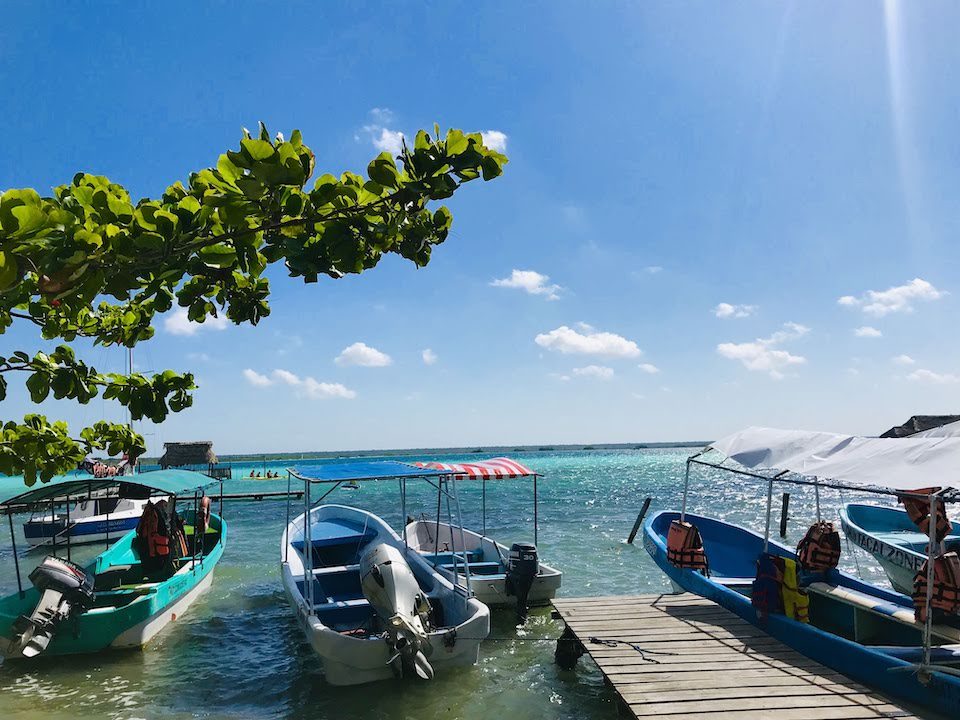
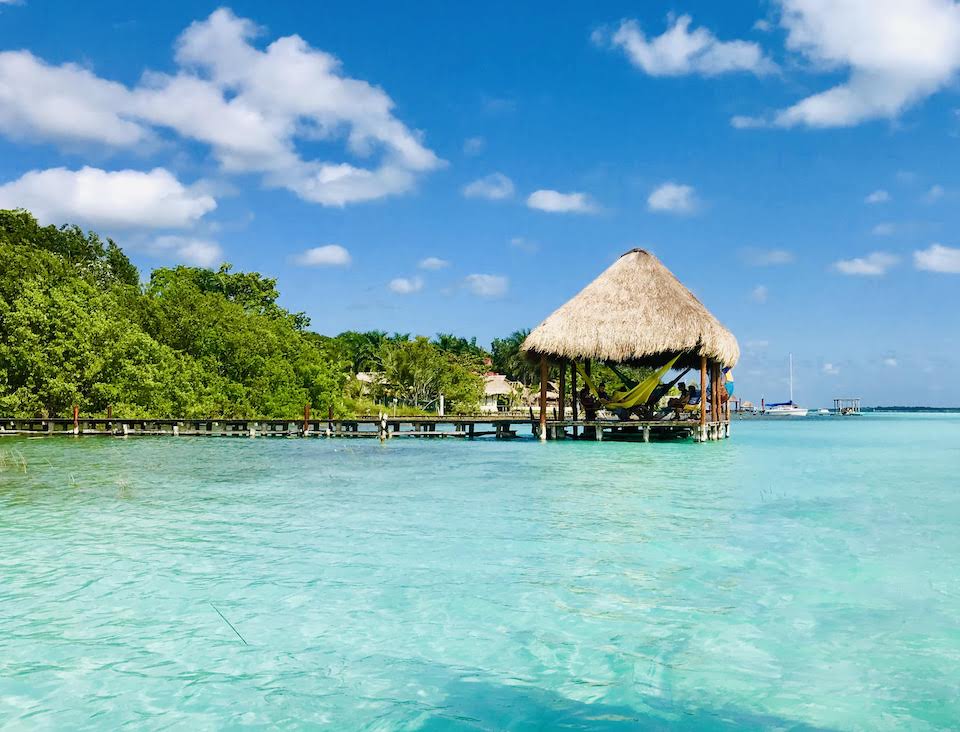
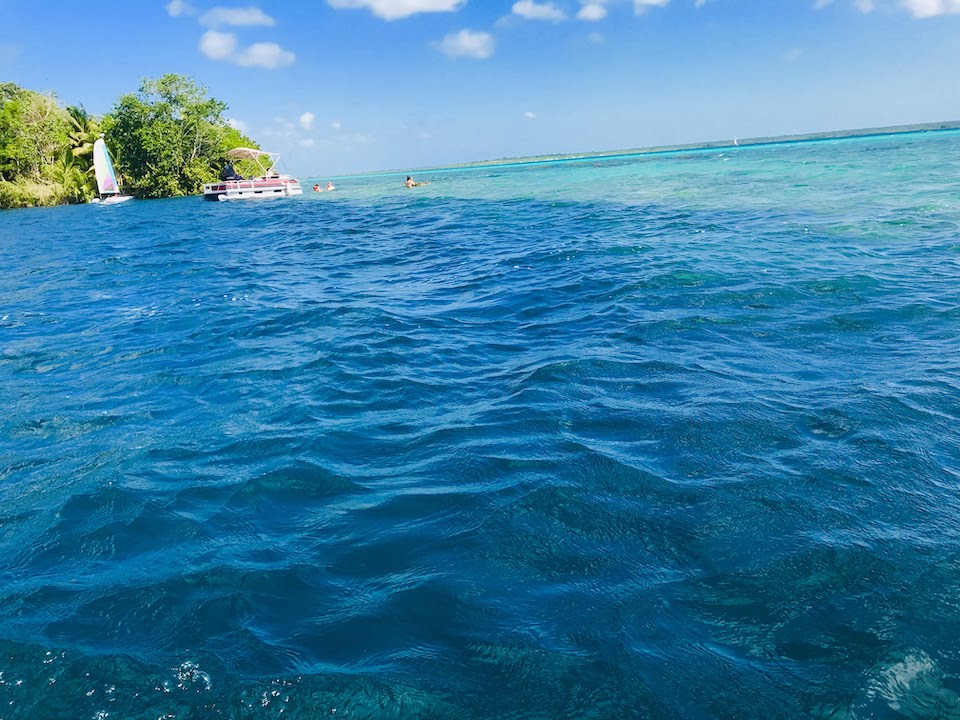
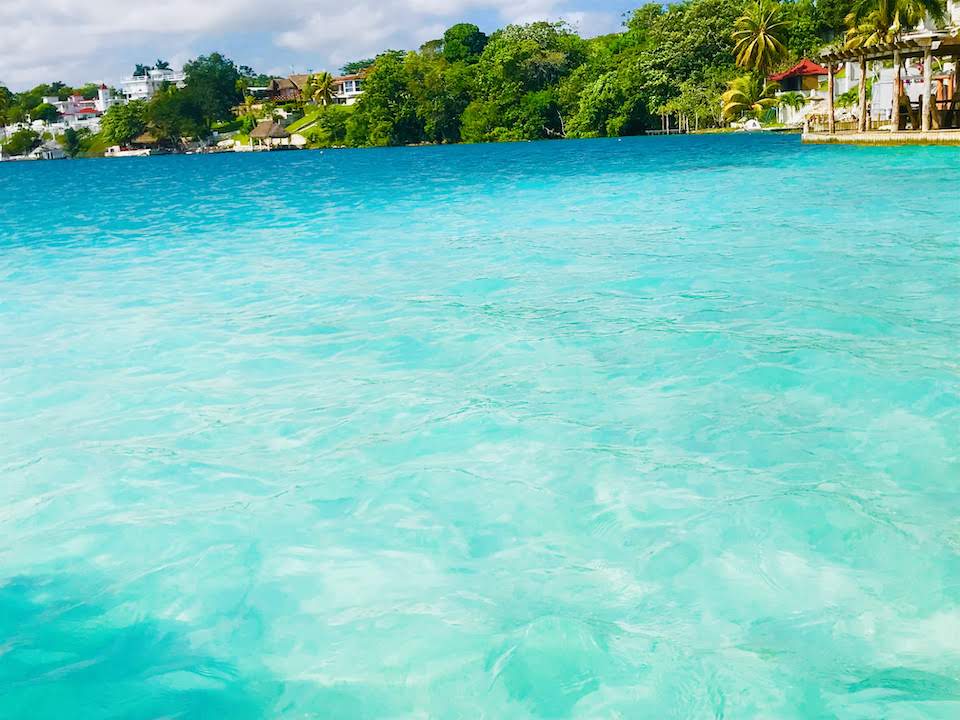
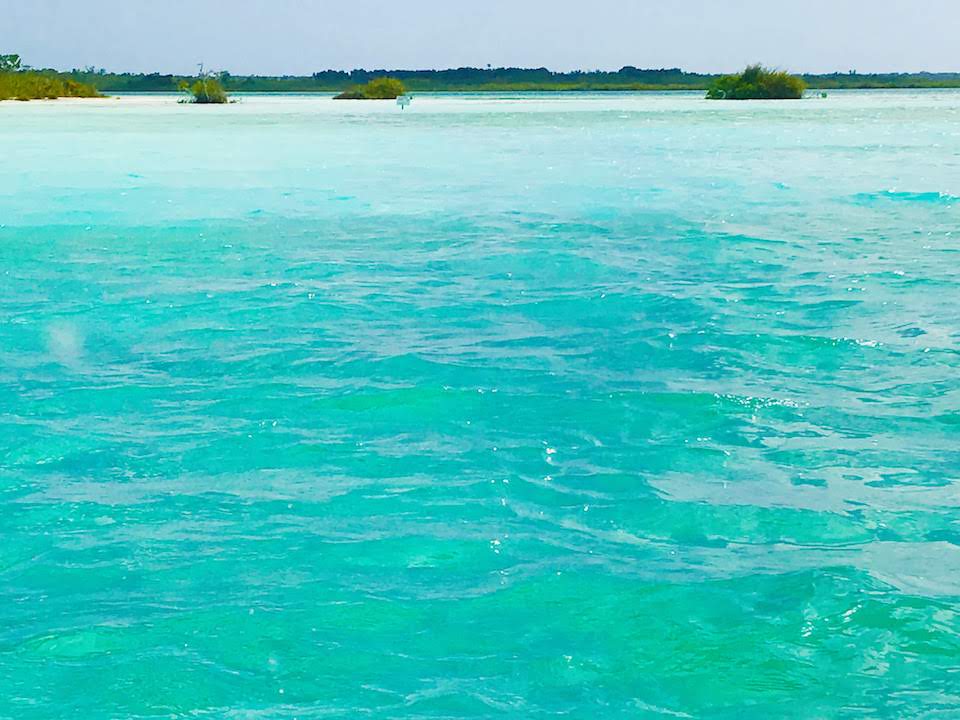
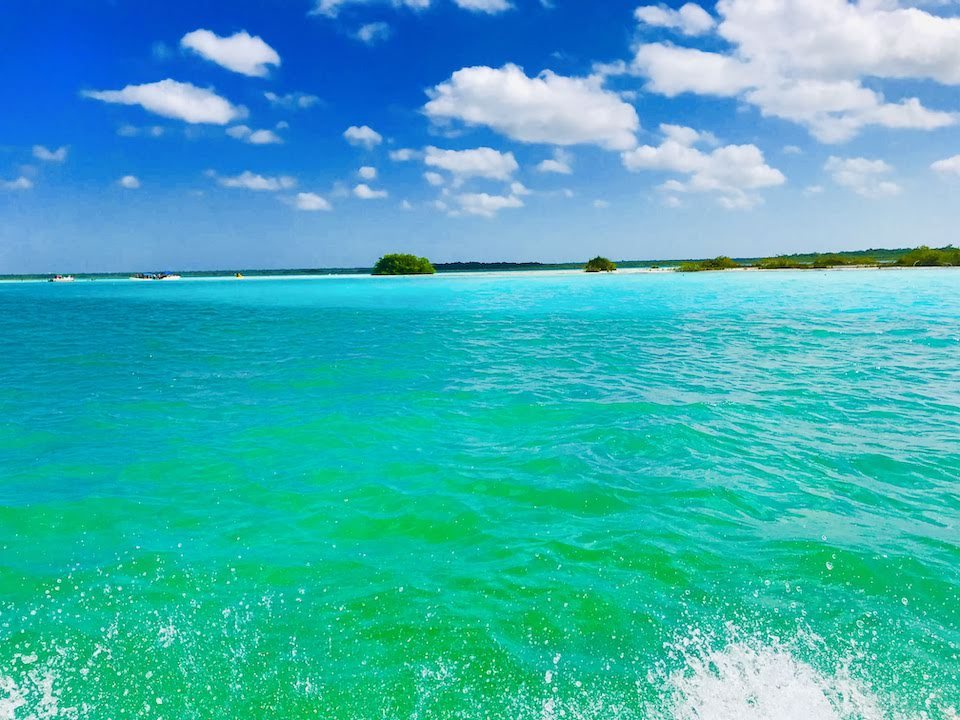
Las Coloradas
Hidden away at the tip of the Yucatan Peninsula is this cotton candy-colored salty lake in a tiny fishing village called Las Coloradas. The vibrant pink color of these lakes is due to red-colored algae, plankton, and brine shrimp that thrive in the salty environment. As the water evaporates, these organisms become more concentrated, glimmering pink in the bright Mexican sunlight. It is a 5-hour drive from Merida and is part of the Rio Lagartos Biosphere Reserve, which are protected wetlands home to flamingos, pelicans, sea turtles, and various other birds. Along with fishing, salt mining is very big here and has been since the Mayan times. The large pink lake we see today is created by a company that mines salt on a very large scale. And due to this, entering the water now is off-limits to tourists. And as this is maintained by the mining company, there is a small fee of 25 Pesos/person as an entrance fee. As you go through the gates, you walk along a path in the middle with the pink lake on your right and a blue/green lake on your left. Since you can’t get into the waters of the pink lake, it is more of a photo op, but it is a really pretty sight. It is a shallow lake and covers a pretty large area and is amazingly pink. The pictures show how pretty and unreal this place is. I have not seen anything like this and I highly recommend a visit as this is such an unusual sight.




Rio Lagartos
You can visit Las Coloradas and Rio Lagartos as a combined tour from Merida. From Las Coloradas, you will drive for another 2 hours to reach Rio Lagartos. Rio Lagartos is a beautiful river surrounded by thick mangroves, home to several birds and wildlife which are protected by the biosphere reserve. The only way to see these birds is to hire a boat that will take you around the river. There were 5 of us in our group and the boat rental for 1 hour was 1500 pesos which came up to 300 pesos/person. The boat first took us to a shallow area of the river where we saw several beautiful flamingos. After taking some pictures, we cruised along the river spotting various birds. The soil in this river (just like in Laguna Bacalar) is known to have natural skin exfoliating properties and so tourists flock here to cover their bodies with the mud. We passed several boats on our way with people covered in what looked like white paint all over their faces and bodies.

As we approached the area containing this mud, we were surrounded by tons of pelicans. It was quite an experience and also great to take photos as these birds were unafraid and flew onto our boat and were perched almost at arm’s length from us. None of us in our boat were interested in getting a mud bath, so after taking several pictures of these beautiful creatures, we made our way back. Although this river is not a very popular destination, it has its charm and I highly recommend you visit this place, both for the natural mud spa and the pelicans.


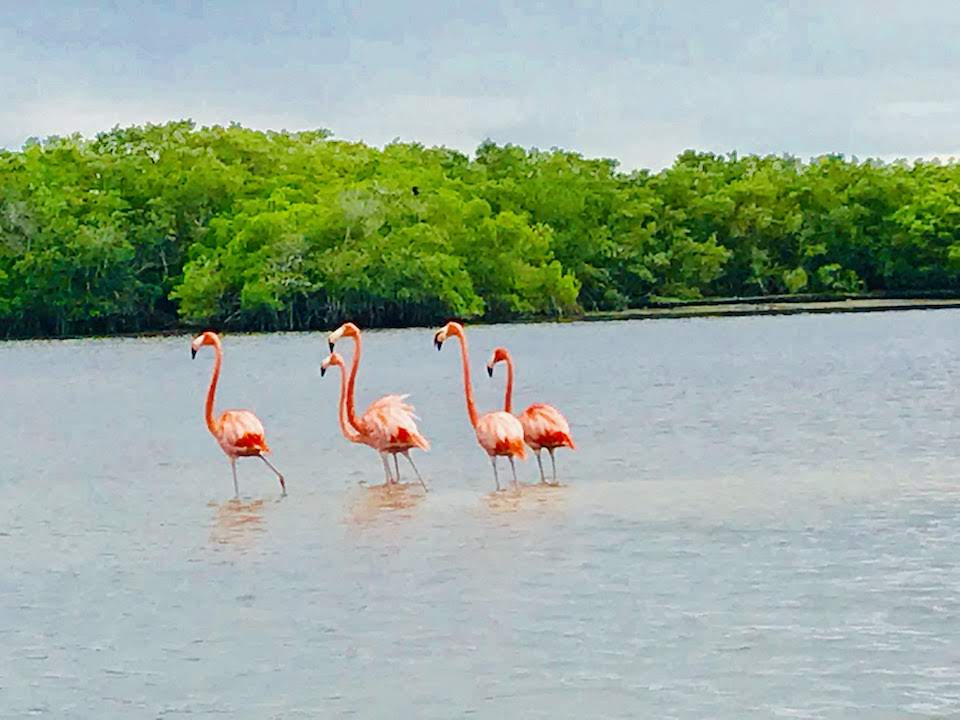
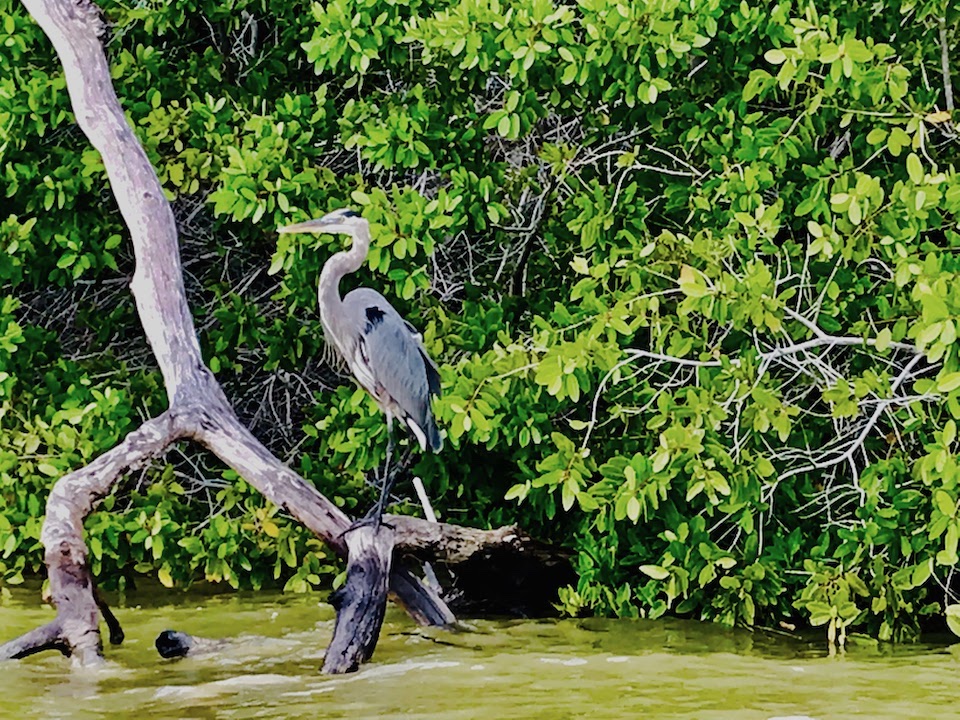
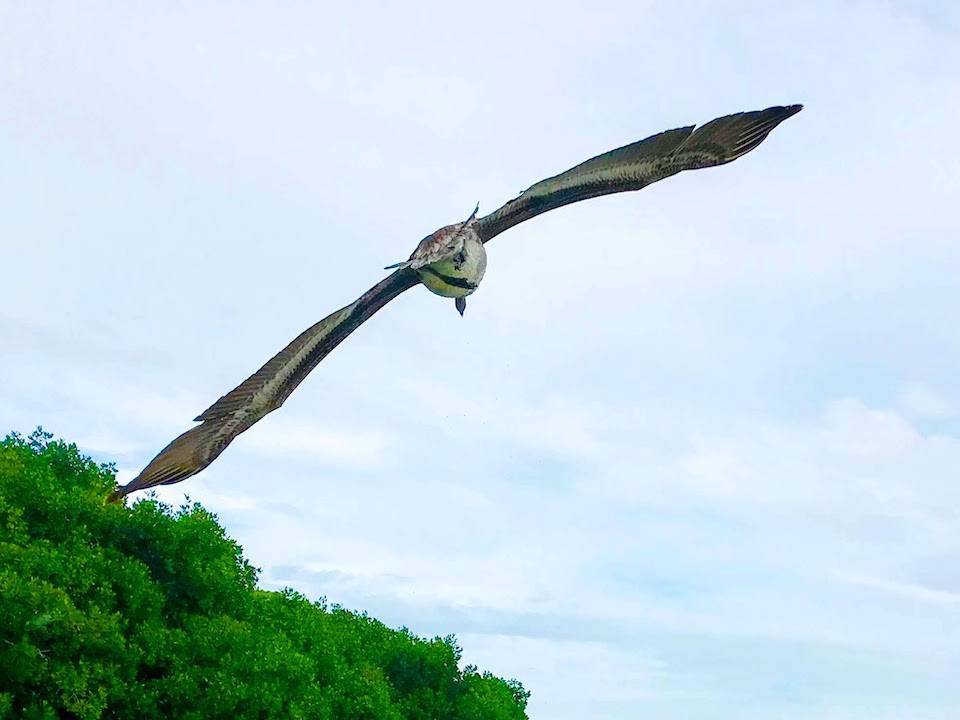
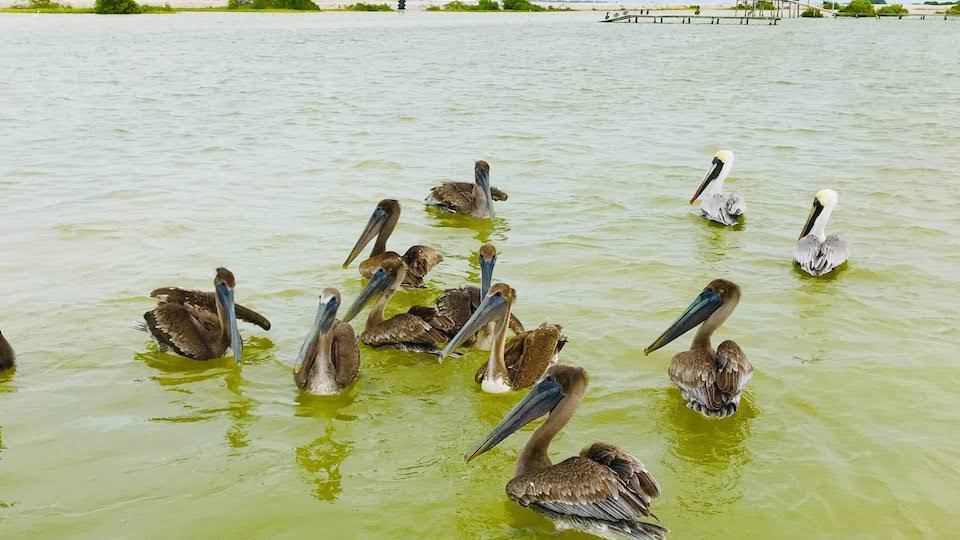
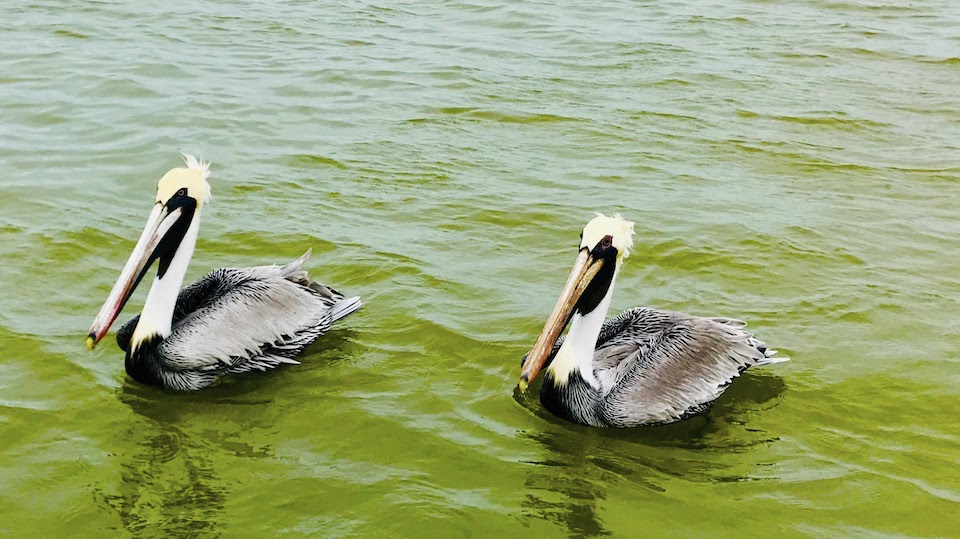
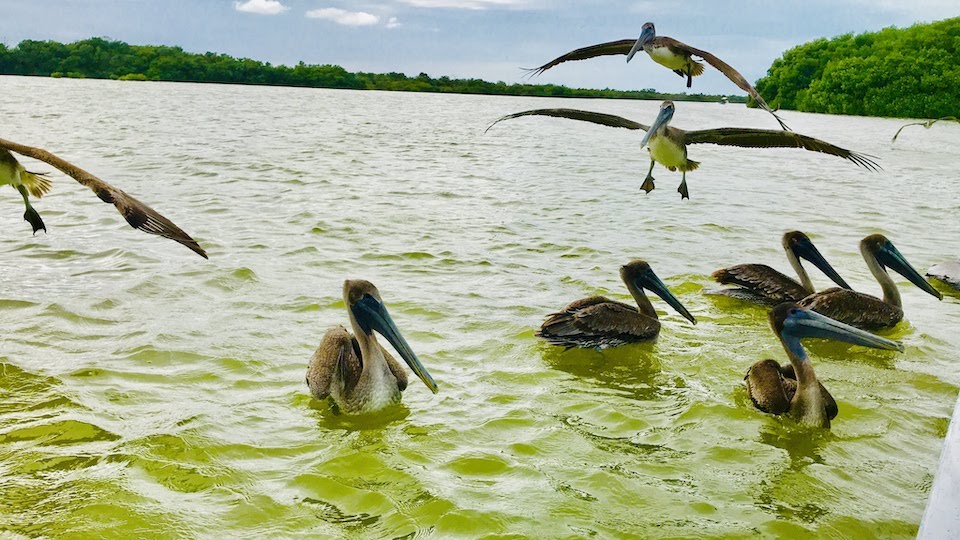
Laguna Montebello
The Montebello lakes are a set of 59 lakes around 150 kms from San Cristóbal de las Casas close to the Guatemalan border. The lakes are famous for their striking colors, which vary due to their different mineral contents, ranging from emerald and turquoise to dark green, and even purple and reddish black. 
- Lake Tziscao which is the largest of the lakes is just a few yards from the border. A small offshoot of this lake is Lago Internacional, and the borderline of Mexico and Guatemala cuts through this in half. As a bonus, you can step into Guatemala here without any stamping or paperwork. There is a commemorative stone and also flags of both countries on either side. This is a fun place to stand on either side of the border and take some novelty photographs.
- Lago Pojoj is one of the most beautiful lakes we have seen in Mexico. It is a large lake with a small island in the middle and showcasing spectacular views. It rains every day here which gives the atmosphere a very remote and tranquil feel. The best thing about this lake is that you can hire a log boat to go around the lake and stop over at the island for 200 pesos/person (around $10). We got to row the log boats around the little island and you will also be able to stop at the island and walk around. Here they have built a small wood bridge and a greenhouse where they grow orchids. The guides make it a point to mention that this island is famous for being featured in a commercial with Antonio Banderas. It is a very beautiful place and you get the feeling that you are one with nature. The blue turquoise water and the white sand on the island are absolutely stunning.



WATERFALLS
Hierve el Agua
Hierve el Agua (Spanish for “the water boils”) is a rock formation that resembles cascades of water. Located about 112 km from Oaxaca, it contains 2 waterfall-like rock formations. These have been formed thousands of years ago and they are freshwater springs whose water is over-saturated with calcium carbonate and comes to the surface through cracks or fissures on the mountainside. Just like stalactites are formed in caves, the excess minerals in the water are deposited onto the side of the cliff resembling a frozen waterfall. Both cliffs rise over fifty meters from the valley floor, with one rock formation reaching down twelve meters called “Cascada chica” (small waterfall) and the other reaching down thirty meters named “Cascada grande” (large waterfall). The ground is completely white due to the deposition of excessive calcium carbonate. You will be able to visit the top of both cliffs and walk on top of the “mouth” of the waterfalls. You can see small amounts of water forming a shallow pool here. It feels surreal being perched on top of a waterfall, at the tip of a cliff with no real barrier and a sheer drop down below. There is a small path leading down from “Cascada grande” where you could get a close-up view of the side of the waterfall. But if you walk up to the top of “Cascada chica”, you will get a pretty good panoramic view of the large waterfall. On top of this cliff are two large artificial pools containing freshwater that is ideal for swimming. There was also a small hole from which you could see the spurt of boiling water coming out, but this is fenced as it is not advisable to touch it. This is another unique place to visit among the myriad of places Mexico has to offer and you will be glad you did so.

Agua Azul
This waterfall or cascade is very impressive and is true to the fact that it is considered one of the top destinations in the state of Chiapas. It is a series of cascades that form little cataracts as the Xanil river flows downstream. You get many viewing spots as you make your way through several steps covered on either side with shops selling all kinds of clothing, souvenirs, food, etc. We were told that the Cascada de Agua Azul is not blue now as the name suggests because of the rains which had brought up a lot of mud from underneath rendering the falls brown. But we did not find that to be the case and it was all the more impressive to us. There are several spots along the way where you can get into the water and swim making this a truly memorable experience.



Cascada El Chiflón
This is a very beautiful waterfall located near San Cristobal de las Casas in the state of Chiapas. It is a cascade of waterfalls that drops into little turquoise pools and there are steps to several vista points overlooking the various small waterfalls. There is even a zip line that you can take to get back down and this will give you a fantastic view of the cascades. 

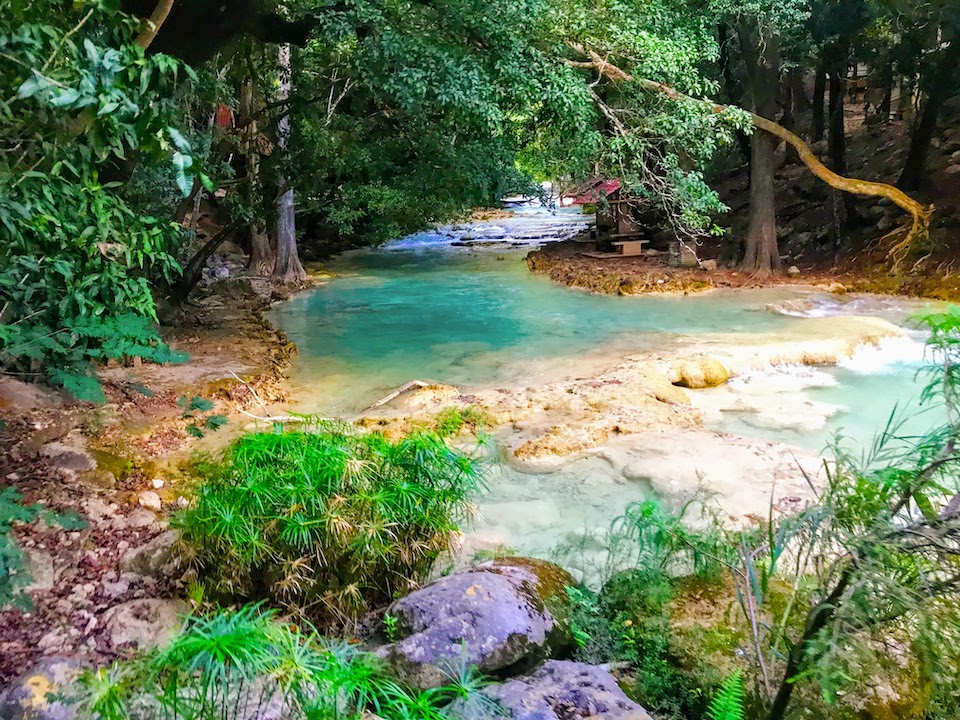
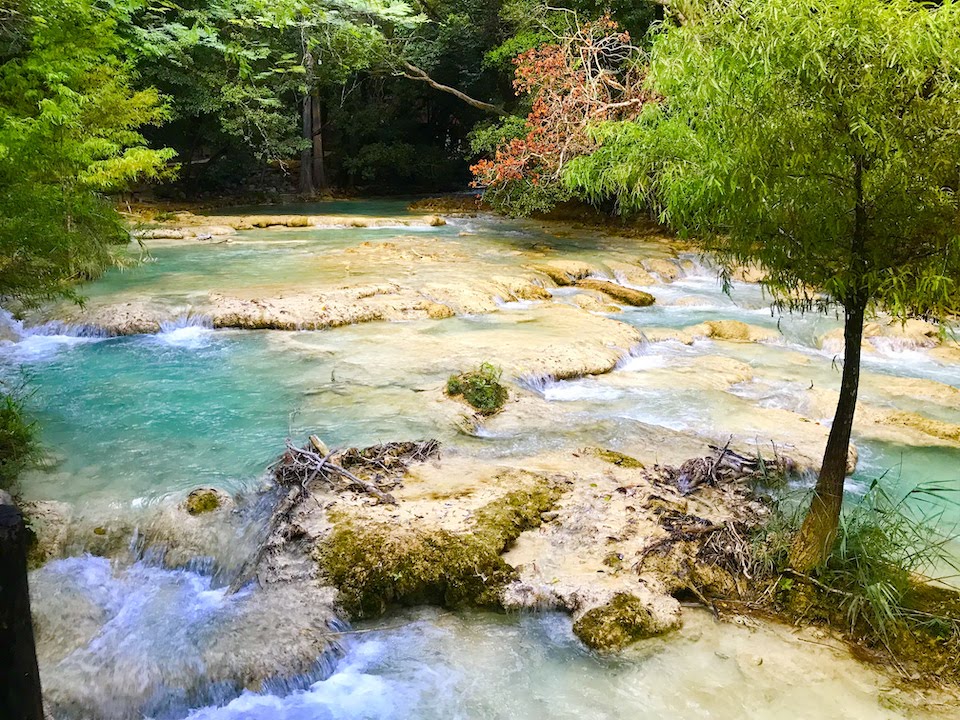
Misol-Ha
This waterfall is located around 40 minutes drive from Palenque. This was a beautiful single drop waterfall of about 35 meters that drops in a large circular pool where people can swim. Additionally, you are able to walk behind the falls on a path that ends in a cave. For 5 pesos/person, you can also go inside the cave and at the end of the dark cave is a small cascade that falls into another small pool. A visit to this waterfall was included in our tour of Palenque ruins along with Agua Azul.

Cascada de Texolo
This is a waterfall located 126 km from Veracruz and 19 km from the state capital Xalapa. The waterfall is approximately 60-80 feet high. There is a pedestrian bridge over the gorge connecting the dense woodland. On the other side, are two smaller waterfalls that can be seen from some of the paths in the area. The waterfalls and the surrounding area including the bridge were made famous from the movie ‘Romancing the Stone’. In the movie, the jewel is hidden in a cave behind a waterfall and Texolo Waterfall was used for that scene.

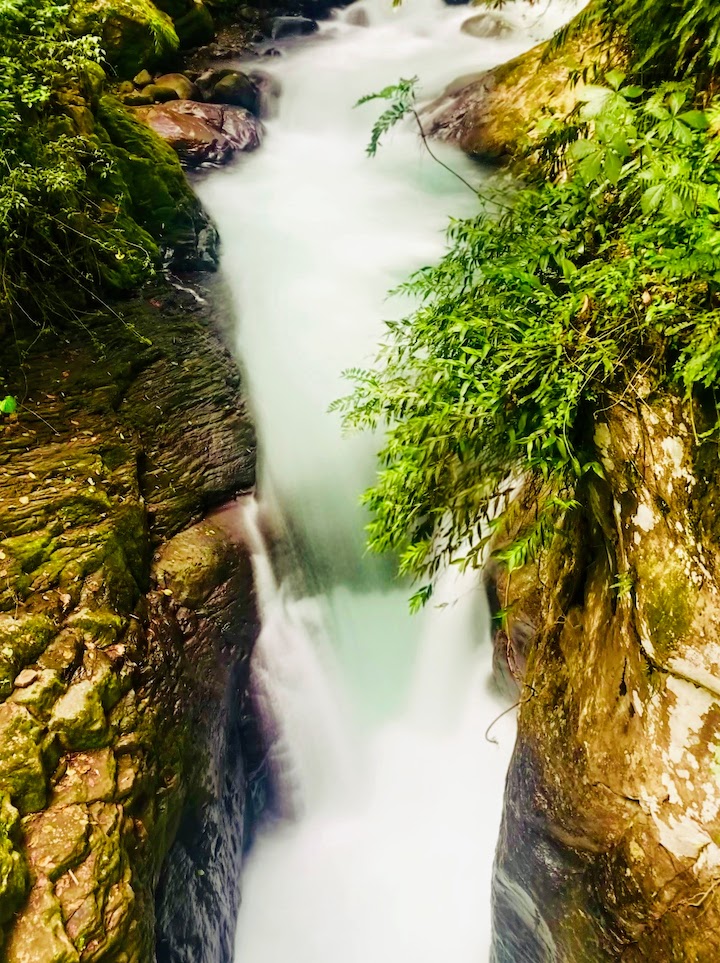
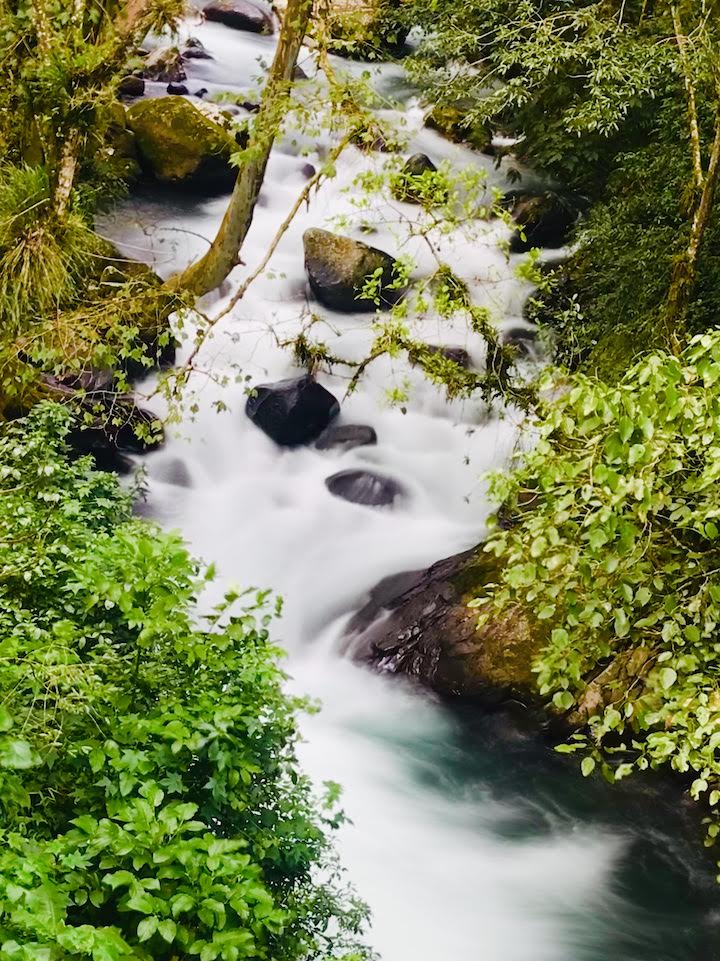
This is just a list of the places we visited but they are in no way a complete list of all that this great country has to offer nor is it a list of the best ones. Although we have made every effort to cover most of the interesting places on our route, there are still a few we did not see, especially the cenotes, as there are hundreds of them.



